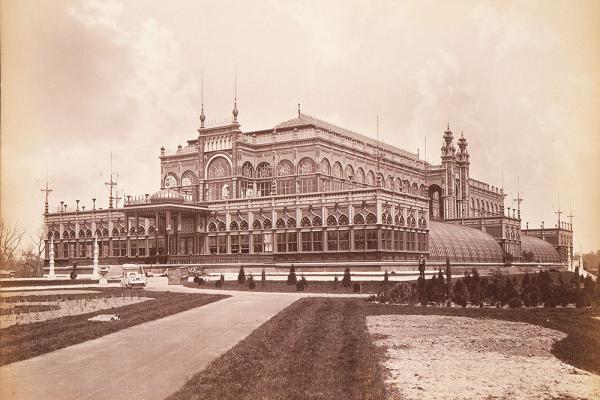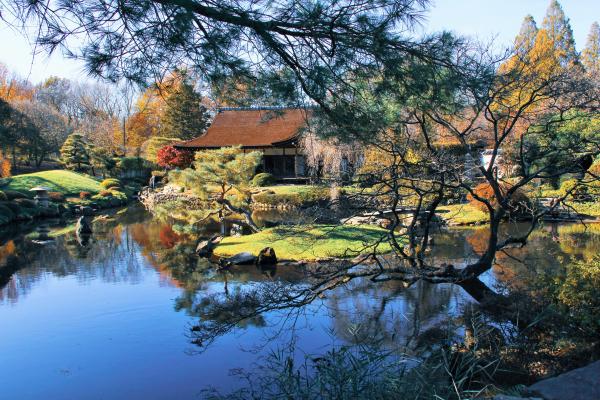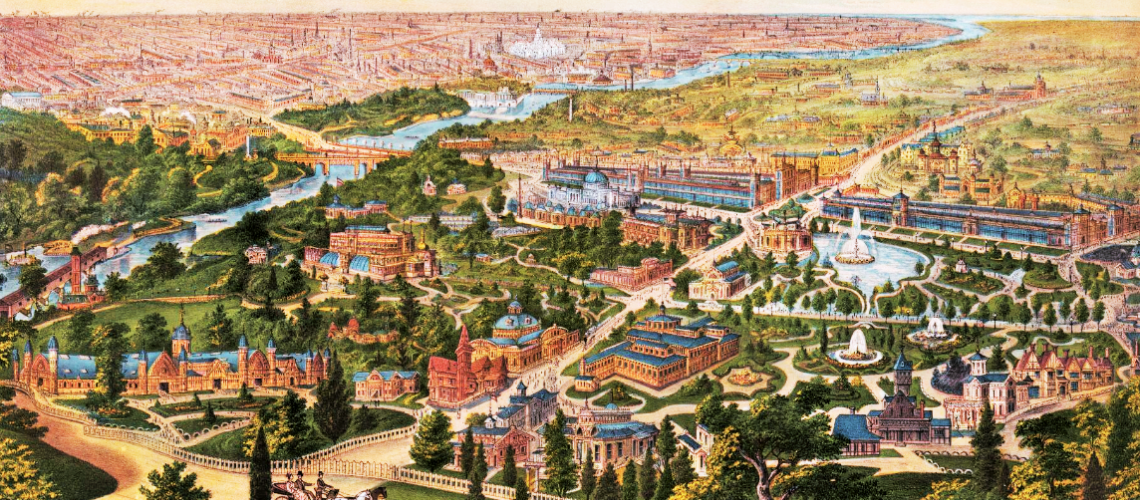This colorful lithograph shows the landscape and buildings of the 1876 Centennial Exposition. The view is north to southeast and south, with the Schuylkill River on the left. The fair’s ornate Agricultural Building (lower left) straddles the northern boundary of the Exposition. Belmont Avenue bisects the Exposition from north to south, with Memorial Hall and Main Hall on the east side of that street (upper center) and Machinery Hall on the west side (upper right, behind the fountain).
The Centennial Exposition of 1876, a world's fair of epic proportions constructed in West Fairmount Park, attracted almost 10 million visitors in the six months of its operation. The imprint of that event is still to be seen in parts of the park.
The Centennial Exposition of 1876, a world's fair on an epic scale constructed in West Fairmount Park, showcased the U.S.'s industrial achievements on the 100th anniversary of the Declaration of Independence. The Exposition attracted almost 10 million visitors in the six months of its operation. They were dazzled by displays of world cultures and, most important from an American perspective, exhibits that showcased the U.S.'s industrial might and ingenuity. The Exposition represented incremental advances in women’s rights even as its displays perpetuated stereotypes of African Americans and North American Indians. The landscape has evolved in West Fairmount Park with some visible imprints of the world’s fair, most notably Memorial Hall, which today houses the Please Touch Museum.
Stories in this Collection
 While the 1876 Centennial Exposition was organized as a world’s fair, the first on U.S. soil, it was explicitly planned to showcase America’s meteoric rise as a world industrial power. The Exposition showcased numerous breakthrough inventions, among them the telephone, typewriter, and sewing machine, and introduced novelties such as root beer, popcorn, and bananas to American consumers. Five main buildings dominated this cultural landscape and reflected the eclectic dynamism of the fair. |
 The Women’s Pavilion showcased the industrial and artistic achievements of American women for an international audience. Although the organizers’ political activism was limited, the Women’s Pavilion helped advance the cause of women’s rights through its displays. White racial prejudices and invidious cultural stereotypes prevailed with respect to the fair’s treatment of African Americans and American Indians. |
 Two of the Centennial Exposition's principal buildings were intended as permanent structures. Memorial Hall was extensively renovated after World War II, and today is home to the Please Touch Museum. The second building, Horticultural Hall, was demolished in 1955, after a long drought of neglect, with extensive hurricane damage administering the coup de grace. |
Parkside (formerly Elm) Avenue’s proximity to the green spaces of the former grounds of the Centennial Exposition attracted wealthy, typically German-American homebuyers from the congested central city at the turn of the 20th century. The houses they purchased were distinctly Victorian. The population of the neighborhood that arose here after 1900 was predominately Jewish by the 1920s and African American by the 1950s. |
